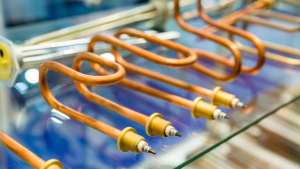The placement of your HVAC units can significantly influence performance, efficiency, and even your property’s operating costs. In this post, we’ll explore the best practices for HVAC placement in commercial settings, ensuring you manage your properties with optimal effectiveness.
Understanding HVAC and Its Importance
Before diving into placement strategies, let’s reaffirm what HVAC systems do. They regulate indoor temperatures, ensure adequate air circulation, and filter out pollutants to provide cleaner air quality. For commercial properties, where the scale is larger and the usage more intensive, the demand on these systems is multiplied. An optimally placed HVAC system is, therefore, not just a matter of comfort, but one of health, safety, and fiscal prudence.
Factors Influencing HVAC Placement
When planning the placement of an HVAC system in a commercial building, many factors come into play:
- Access for Maintenance and Repairs: HVAC systems require regular servicing to run efficiently. Easily accessible units will reduce labor time and maintenance costs.
- Noise Considerations: To minimize disruption to occupants, noisy components like compressors should be located where the least disturbance is caused.
- Energy Efficiency: Placement can affect energy consumption. For example, placing an HVAC in a shaded area will typically reduce cooling costs in the summer.
- Building Design and Use: The architectural design, size, and how the space is used will influence the best positions for both indoor and outdoor units.
- Climate and Environment: External environmental factors, such as the presence of trees, bodies of water, or high pollution areas, can impact system functionality.
Best Practices for HVAC Placement in Commercial Buildings
With these factors in mind, let’s look at the ideal locations for HVAC systems within commercial settings:
Outdoor Units
- Rooftop: Often a popular choice due to space-saving and security (reducing the risk of vandalism), rooftop placements can expose units to extreme weather. Ensure that your system is designed to withstand this or is appropriately sheltered.
- Ground Level: If placing units at ground level, choose a spot with good drainage away from foliage that could obstruct airflow or enter the system. Consider potential future expansions of the landscape that might encroach on the system.
Indoor Units
- Utility Rooms: Designated utility rooms can keep HVAC equipment centralized and ready for access by maintenance personnel. These spaces should allow for sufficient airflow and have reinforced flooring to support the weight of the equipment.
- Above Ceilings or Below Floors: In buildings where space is at a premium, concealing HVAC units above false ceilings or below raised floors can be a smart use of space, though this could complicate maintenance efforts.
Additional Considerations
- Vent Placement: Vents should be distributed to ensure even air circulation throughout the space. Avoid locations where furniture or equipment might block them.
- Ductwork Insulation: To prevent energy loss, insulated ductwork is essential, especially if it has to travel through unconditioned spaces.
Selecting the right location for an HVAC system in a commercial structure is a crucial decision that goes beyond simple convenience. It influences system efficiency, comfort levels within the building, and the long-term operational costs of the property. Rigorous planning, combined with knowledgeable consultation from HVAC professionals, can lead to informed decisions that benefit everyone involved – from property managers to tenants.
Be sure to consider all relevant factors when choosing the HVAC placement for your property and perform regular maintenance to extend the life and efficiency of your units. With the right strategy, your HVAC system can provide optimal comfort and air quality for years to come.
Takeaways for Property Managers
- Consider accessibility, noise, and energy efficiency when placing your HVAC units.
- Choose rooftop or ground-level placements based on the design and environmental conditions of the area.
- Ensure proper vent distribution and duct insulation for maximum system efficiency.
- Regular maintenance is key to long-term HVAC effectiveness and cost management.
Property managers carry the responsibility of balancing costs with comfort and functionality. Smart HVAC placement decisions can secure a win on all fronts.
Heating, ventilation, and air conditioning (HVAC) systems are crucial elements in maintaining the comfort and safety of commercial properties. For property managers and professionals not specialized in HVAC technology, understanding the complexities of these systems can be overwhelming. But fear not! With these tips in your toolbox, you’ll be equipped to handle any HVAC challenge that comes your way.
With Level One HVAC as your full-service mechanical contractor, you can count on reliable and high-quality service every time. We offer emergency 365 and 24/7 services, which ensures that your HVAC problems are resolved quickly and efficiently, minimizing any downtime or loss of business. Contact us today! Our experts are happy to answer any questions you may have.
New Hudson, MI #248.486.6500
West Branch, MI #989.999.4822













